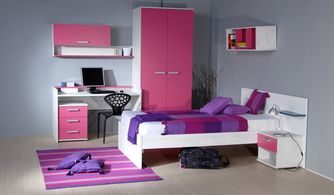房屋家具摆放布置软件
Title: Designing a Furniture Room Layout App
In the realm of interior design, creating an app that assists users in arranging furniture within a room efficiently and aesthetically is a brilliant concept. Let's delve into the intricacies of designing such an app, considering user experience, functionality, and technical aspects.
User Experience (UX) Considerations:
1.
Intuitive Interface:
The app should feature a userfriendly interface with intuitive controls for placing, rotating, and resizing furniture items. Gestures like draganddrop and pinchtozoom can enhance usability.2.
Visual Feedback:
Providing realtime visual feedback as users manipulate furniture items ensures a smooth and engaging experience. Snaptogrid functionality can help align objects accurately.3.
Customization Options:
Users appreciate customization options. Allow them to choose furniture styles, colors, and textures to match their preferences and existing decor.4.
Preview and 3D Visualization:
Incorporating a preview mode where users can visualize their room layout in 3D adds value. This feature aids in better understanding spatial arrangements and proportions.Functionality:
1.
Room Measurement Tools:
Integrating tools for measuring room dimensions and furniture pieces enables users to plan layouts that maximize available space.2.
Furniture Catalog:
Curate a comprehensive catalog of furniture items including sofas, chairs, tables, and cabinets. Each item should be scalable and rotatable to accurately represent realworld dimensions.3.
Save and Share Designs:
Allowing users to save their layouts for future reference or share them with friends and family fosters user engagement. Integration with social media platforms can facilitate seamless sharing.4.
Augmented Reality (AR) Support:
Implementing AR functionality enables users to overlay virtual furniture onto their physical space, offering a realistic preview of how items will look and fit.Technical Aspects:
1.
Platform Compatibility:
Develop the app for both iOS and Android platforms to reach a broader audience. Utilizing crossplatform frameworks like React Native or Flutter can streamline development.2.
Backend Infrastructure:
Implement a robust backend infrastructure to store user data securely, manage catalogs, and support collaborative features like sharing designs.3.
Graphics and Rendering:
Optimize graphics and rendering pipelines for smooth performance, especially in 3D visualization and AR modes. Leveraging graphics libraries like OpenGL or Vulkan can enhance rendering efficiency.
4.
Integration with External APIs:
Integrate with external APIs for accessing furniture catalogs from popular retailers. This integration provides users with a diverse selection of furniture options.Guidelines for Designing:
1.
UserCentric Approach:
Prioritize user needs and preferences throughout the design process. Conduct user research and usability testing to gather feedback and refine the app iteratively.2.
Simplicity and Clarity:
Keep the interface simple and clutterfree to avoid overwhelming users. Use clear visual cues and instructional tooltips to guide users in navigating the app.3.
Consistency in Design:
Maintain consistency in design elements such as typography, color schemes, and iconography to ensure a cohesive user experience across the app.4.
Accessibility Considerations:
Design the app to be accessible to users with disabilities by incorporating features like voice commands, screen readers compatibility, and adjustable text sizes.In conclusion, designing a furniture room layout app requires meticulous attention to user experience, functionality, and technical implementation. By adhering to these principles and guidelines, you can create a compelling and usercentric app that simplifies the process of interior design for users worldwide.





